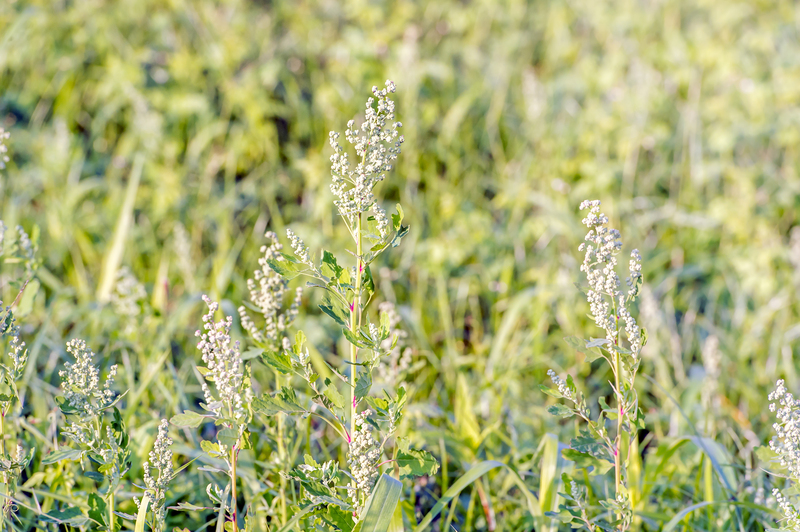Mastering the Layout of Garden Seating Spaces
Posted on 20/08/2025
Mastering the Layout of Garden Seating Spaces: An Expert Guide
Transform your garden into an inviting haven by mastering the layout of garden seating spaces. Whether you have a spacious backyard or a small urban garden, planning and designing outdoor seating areas can revolutionize the way you relax, entertain, and connect with nature.
Why Garden Seating Spaces Matter
Seating areas are the heart of any outdoor environment. They provide a cozy retreat, a space for gatherings, contemplation, or simply soaking up the ambience of nature. The strategic layout of garden seating spaces can enhance both the functionality and beauty of your garden, making it a true extension of your home.

Key Considerations for Garden Seating Layout
- Size and Shape of Your Garden: The available space will dictate seating types and arrangements.
- Garden Style: Formal, informal, cottage, modern, or mediterranean aesthetics call for varied seating layouts and materials.
- Purpose of Seating: Lounging, dining, reading, socializing, or meditation--tailor your seating plan accordingly.
- Sun Exposure and Shade: Consider natural and artificial shade for comfort.
- Privacy and Views: Position seating to make the most of beautiful vistas and ensure a sense of seclusion.
- Accessibility: Ensure pathways and seating are easily accessible for everyone, including children and elderly visitors.
- Materials and Durability: Opt for weather-resistant, low-maintenance materials suited to your climate.
Popular Garden Seating Layout Ideas
1. Cozy Corners and Nooks
Create intimate garden seating areas in hidden corners with L-shaped benches, reading chairs, or a hammock. Use existing greenery or trellises to enhance the feeling of seclusion. This layout suits smaller gardens and offers a peaceful escape from daily stress.
2. Central Gathering Spaces
For larger gardens, designate a central area for socializing. Arrange sofas, chairs, or sectional seating around a focal point--such as a fire pit, water feature, or dining table. This open seating space layout encourages conversation and is ideal for entertaining.
3. Patio and Deck Designs
Use the patio or deck as the anchor for your garden seating arrangement. Choose modular furniture for flexibility or built-in benches for permanence. Enhance with containers, rugs, and lighting for a seamless indoor-outdoor flow.
4. Enclosed Garden Rooms
Define spaces using hedges, living walls, screens, or pergolas. Enclosed rooms within your garden create a sense of privacy, perfect for tranquil seating nooks or outdoor dining. Infuse personality with cushions, throws, and planters.
5. Multi-Level Seating
For sloping or tiered gardens, use retaining walls, steps, or platforms as creative seating solutions. Multi-level seating layouts not only save space but add visual interest and maximize every inch of your garden.
Optimizing the Layout of Garden Seating Spaces
Creating Balance Between Open and Enclosed Areas
Master garden seating layout by blending open spaces (for sun and movement) with enclosures (for shade, privacy, and wind protection). Alternate airy lawns with intimate alcoves, using tall plants, outdoor curtains, or pergolas.
Utilizing Pathways and Focal Points
- Invite Exploration: Curved paths lead guests on a journey, revealing seating areas just out of sight for an element of surprise.
- Anchor with Features: Position seats facing stunning plants, sculptures, or ponds, creating picturesque backdrops for activities and relaxation.
Integrating Nature
Let your seating blend with natural surroundings. Consider built-in planters at the edges of benches, or back your seating into borders of fragrant blooms and grasses for a seamless transition between garden and living space.
Choosing the Right Garden Seating for Your Layout
Benches
Garden benches are versatile, perfect for both formal layouts and casual retreats. Choose traditional wooden benches for classic gardens, or sleek metal for contemporary spaces.
Lounge Furniture
Chaises, couches, and daybeds provide a luxurious spot for sunbathing or napping. Arrange these in sun-traps, or under pergolas with trailing vines for afternoon shade.
Dining Sets
If you love dining outdoors, a sturdy table and chairs set is essential. Place it within reach of the kitchen path and under a canopy or umbrella for comfort. Round tables foster conversation, while rectangular ones fit larger groups.
Movable Seating
Folding chairs, stools, or stackable furniture allow flexibility. Easily reconfigure your layout for parties, kids' playdates, or solitary moments.
Built-in Seating
Stone walls, raised planters, or wooden decks can double as seating. Such permanent fixtures suit contemporary gardens and maximize usable space.
Enhancing Comfort and Style in Garden Seating Spaces
Lighting for Ambiance
- Lanterns and String Lights: Create warm, magical evenings with solar-powered or plug-in lights draped among trees and overhead structures.
- Path Lights: Guide guests safely to different seating areas.
- Spotlights: Highlight garden features and ensure your seating space feels secure after dark.
Soft Furnishings and Accessories
Add character with waterproof cushions, outdoor throws, and colorful rugs. These can easily be swapped seasonally, creating variety and maintaining comfort.
Shelter and Shade
Ensure your garden seating layout is comfortable in any weather. Use umbrellas, pergolas, retractable awnings, or leafy trees to provide essential shade. Consider windbreaks and snugs for exposed plots.
Bringing in Nature
- Potted Plants: Cluster containers around seating for year-round interest.
- Vertical Gardens: Living walls or hanging baskets save space and add lush privacy.
- Fragrant Herbs: Plant lavender, thyme, or basil near seats for a sensory treat.
Planning for Different Types of Gardens
Small Urban Gardens
Maximize scarce space with compact furniture and clever zoning. Use foldable or stackable chairs, wall-mounted benches, or even dual-purpose planters/benches. Mirrors and vertical gardens help create the illusion of depth and openness.
Large Country Gardens
Break the area into 'rooms' with different functions: a patio for dining, a pergola-covered sofa for reading, benches for quiet contemplation under trees. Roaming pathways can link these seating spaces, inviting exploration.
Modern Minimalist Gardens
Emphasize clean lines with concrete benches, modular seating, and monochromatic palettes. Ensure the seating layout complements structural planting and bold architectural elements.
Cottage or Wildlife Gardens
Embrace meandering paths and tucked-away seating nooks. Wicker chairs, wooden benches, or log stools surrounded by wildflowers integrate seamlessly with the surroundings.
Design Tips for Mastering Garden Seating Layouts
- Start With a Plan: Sketch your garden and mark sun patterns, wind direction, and key views before deciding where to put seating.
- Zone for Function: Group seating by activity--dining, relaxing, or socializing--so each area serves a clear purpose.
- Use Scale to Your Advantage: Choose furniture that fits: avoid oversized pieces in narrow spaces, or tiny chairs that look lost in large gardens.
- Ensure Flow: Leave wide enough paths (at least 90cm/3ft) for easy movement between seating areas.
- Mix Materials: Blend wood, stone, metal, and rattan for interest, keeping durability and maintenance in mind.
- Emphasize Connection: Use consistent colors or shape motifs across your garden seating layout to unify different spaces.
Common Mistakes to Avoid
- Ignoring Sun and Shade: Without adequate protection, seats may become uncomfortable on hot afternoons or in gusty weather.
- Poor Traffic Flow: Overcrowding small gardens or blocking key paths makes spaces less welcoming.
- Neglecting Maintenance: Choose materials and plants that won't become slippery, splintered, or overgrown, ensuring safety year-round.
- Missing Focal Points: A seating space with nothing captivating to look at can feel dull or exposed.
Sustainability in Garden Seating Layouts
Eco-friendly choices can elevate your garden seating layout while caring for the planet:
- Use Reclaimed Materials: Salvaged wood, recycled plastic, or upcycled stone make stylish and sustainable furniture.
- Choose Native Plants: For surrounding beds and privacy screens, opt for flora that thrives naturally in your climate.
- Incorporate Rainwater Harvesting: Direct runoff from pergolas or awnings to water nearby plants.

Real-Life Garden Seating Layout Inspirations
A Tranquil Reading Retreat
A shaded corner with a curved wooden bench, surrounded by bamboo and ferns. Solar fairy lights add evening charm, while nearby water features create a restful soundtrack.
Entertainer's Haven
A sprawling deck with modular sofas arranged around a fire pit. Dining table beneath a pergola nearby. Herb-filled planters edge the space, making it easy to garnish drinks on the spot.
Family-Friendly Zone
Benches and tables integrated into raised beds, providing extra seating for gatherings while doubling as a spot for kids to play and explore. Bright cushions and outdoor games complete the picture.
Summary: Unlock the Potential of Your Garden!
Mastering the layout of garden seating spaces requires careful planning, creativity, and attention to comfort. By tailoring your design to your garden's shape, needs, and style, you'll create inviting, functional, and visually stunning spaces. From quiet reading nooks to grand entertaining patios, the right seating layout not only enhances usability--it brings your outdoor oasis to life.
Ready to begin? Assess your garden, gather inspiration, and envision how well-designed garden seating spaces can bring beauty, value, and joy to your home for years to come.

